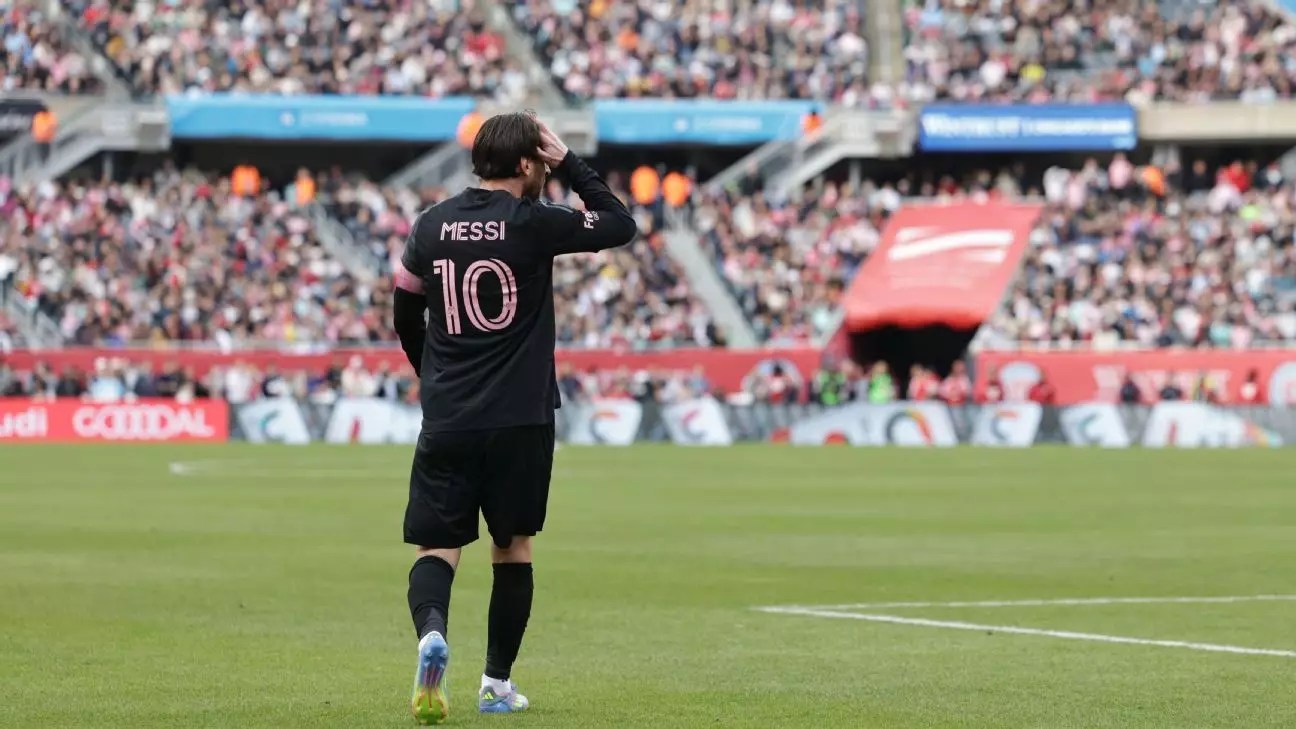Inter Miami’s head coach, Javier Mascherano, has been vocal about the significant influence Lionel Messi has had on Major League Soccer (MLS) since his arrival in 2023. Messi’s signing was seen as a watershed moment for the league, and Mascherano’s comments underscore a belief that the Argentine superstar is altering perceptions of MLS on a global scale. When considering the impact of an athlete of Messi’s caliber, it is essential to note that his mere presence has injected new life and visibility into a league that has long been critiqued for its perceived inferiority to European competitions. Mascherano’s assertion that Messi is “changing how the world sees MLS” conveys a positive sentiment that resonates with fans and stakeholders alike.
It is remarkable to see the tangible results of Messi’s presence, especially highlighted during a recent match at Soldier Field where an all-time attendance record of 62,358 fans was set for the Chicago Fire. This event was not merely a number but a demonstration of the draw that Messi commands. Fans flocked to the stadium, not just for a routine game but to witness a living legend. This phenomenon isn’t an isolated event; clubs like New England Revolution and Sporting Kansas City have also broken attendance records during games featuring Inter Miami. It seems Messi acts as a magnet, pulling in crowds and revamping the image of soccer in North America.
The League’s Responsibility to Continue Growing
Mascherano has acknowledged the obligation of MLS to capitalize on the surge in interest that Messi brings. His comments indicate a call to action: the league must invest in its developmental and marketing efforts to sustain this growth momentum. “It’s necessary to continue supporting the fact that I’m here to continue developing soccer in this country,” Mascherano stated, pointing out that while progress has been made, there is still much work to be done. Messi is seen as a catalyst who can inspire long-term changes within the league’s framework, not just in terms of attendance but also in elevating the level of play and professionalism.
However, is relying on a single player to propel an entire league forward a sustainable strategy? While Messi undoubtedly offers an exceptional spark, there is a critical need for MLS to foster a competitive environment that nurtures homegrown talent. The league must embody the notion of being more than a showcase for international stars. The long-term health of MLS depends on a dual strategy: leveraging high-profile players like Messi to increase visibility while simultaneously honing local talent to build a robust player base.
Challenges on the Field
Despite the substantial off-field excitement that Messi generates, on-field performance remains a pressing concern for Inter Miami. A recent 0-0 draw against the Chicago Fire left them clinging to third place in the Eastern Conference standings, only one point behind leaders Charlotte FC. It’s evident that the team is grappling with the physical toll of an overloaded schedule, compounded by their engagement in the Concacaf Champions Cup. With intense fixtures occurring every few days, the players are experiencing fatigue, which manifests in performance inconsistency.
Mascherano’s comments reveal the intricate balance his team must strike between managing player workload and maintaining competitive edge. While he commended the team’s ability to secure a draw and maintain a clean sheet, the struggle to convert chances into goals reveals the challenges they face in a high-pressure environment. As Inter Miami prepares to face the Columbus Crew and enter the Champions Cup semifinals against the Vancouver Whitecaps, there’s no denying that the stakes are high, and Messi’s presence will be crucial, both as a leader and as a source of inspiration on the pitch.
The Future of Soccer in America
Ultimately, the long-term implications of Messi’s presence in MLS cannot be overstated. He serves as a symbol of what is possible in American soccer, serving not only to attract attention but elevate standards. For American soccer to thrive, it will require more than just star power; it will demand structural changes, enhanced youth academies, and sustained investment in both talent and infrastructure. Therein lies a challenge for league officials and clubs: how to harness the Messi effect so it transforms into permanent growth rather than a fleeting phenomenon.
As the soccer landscape in the United States evolves, will MLS capitalize on this unparalleled opportunity, or will it fall back into obscurity once the glitter of stardom fades? The eyes of the soccer world are set squarely on the league, with the hope that it harnesses this remarkable moment to pave the way for a bright and sustainable future.


Leave a Reply